Forget the boredom of canned legumes: dried beans are a burst of flavor and tradition that will win you over. Cooking dried beans may seem like a daunting task, but with just a few steps, you can bring a dish that tastes of family and love for cooking to the table. You don’t need to be a skilled chef: the time at the stove is minimal and the result will be well worth it. The intoxicating aroma that will fill your home will immediately let you savor the goodness of this inimitable dish. A traditional meal to share: pasta and beans is a perfect dish to bring the family together around the table and create indelible memories. But not only that: impress your friends with this simple and tasty recipe, a real treat for the palate. A healthy and tasty alternative: dried beans are an excellent source of protein, fiber, and vitamins. Perfect for a balanced and nutrient-rich diet, they will surprise you with their creamy texture and authentic flavor. Let yourself be won over by the magic of dried beans: a sensory journey that will take you back to the roots of Italian cuisine, where simplicity and taste meet in perfect harmony. Have you ever tried cooking dried beans? Tell me about your experience in the comments!
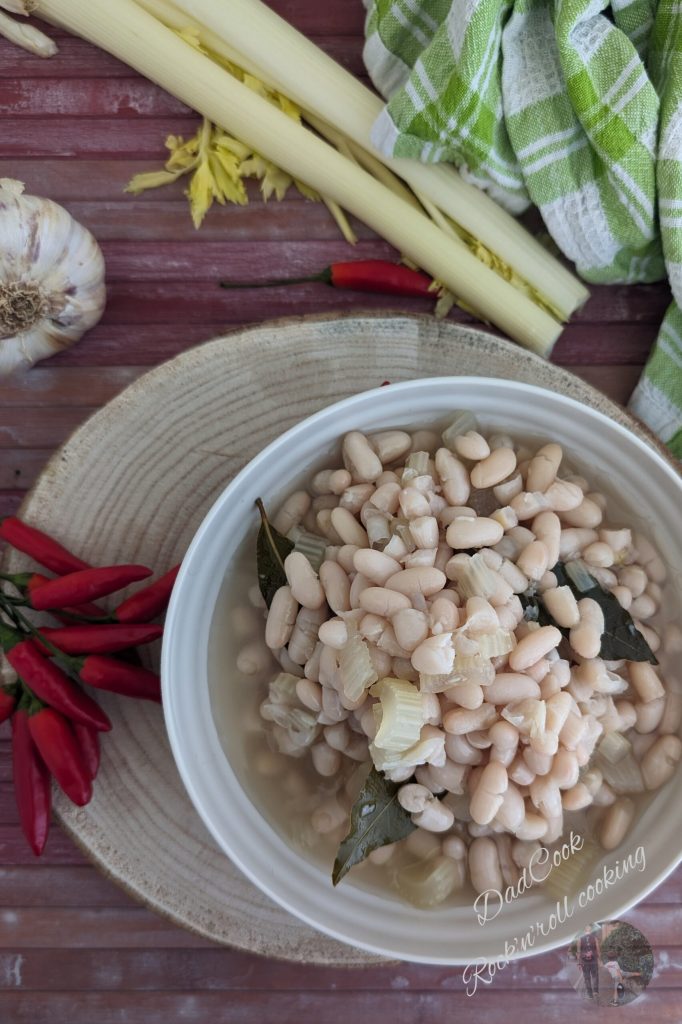
- Difficulty: Very easy
- Preparation time: 5 Minutes
- Portions: 8
- Cooking methods: Boiling, Slow Cooking, Stove
- Cuisine: Italian
- Seasonality: All seasons
- Energy 135.70 (Kcal)
- Carbohydrates 15.31 (g) of which sugars 0.22 (g)
- Proteins 5.88 (g)
- Fat 6.02 (g) of which saturated 0.86 (g)of which unsaturated 3.92 (g)
- Fibers 3.84 (g)
- Sodium 261.83 (mg)
Indicative values for a portion of 12 g processed in an automated way starting from the nutritional information available on the CREA* and FoodData Central** databases. It is not food and / or nutritional advice.
* CREATES Food and Nutrition Research Center: https://www.crea.gov.it/alimenti-e-nutrizione https://www.alimentinutrizione.it ** U.S. Department of Agriculture, Agricultural Research Service. FoodData Central, 2019. https://fdc.nal.usda.gov
Ingredients
- 14 oz dried white beans
- 1 stalk celery
- 1 clove garlic
- 4 leaves bay leaves
- 2 tbsp extra virgin olive oil
- 2 g salt
- 1 qt water
Tools
- 1 Pot
Steps
To cook dried beans, you need to soak them for at least 12 hours in cold water. The night before can be a good time to do this: soak them in a bowl covered with water and store them in the refrigerator.
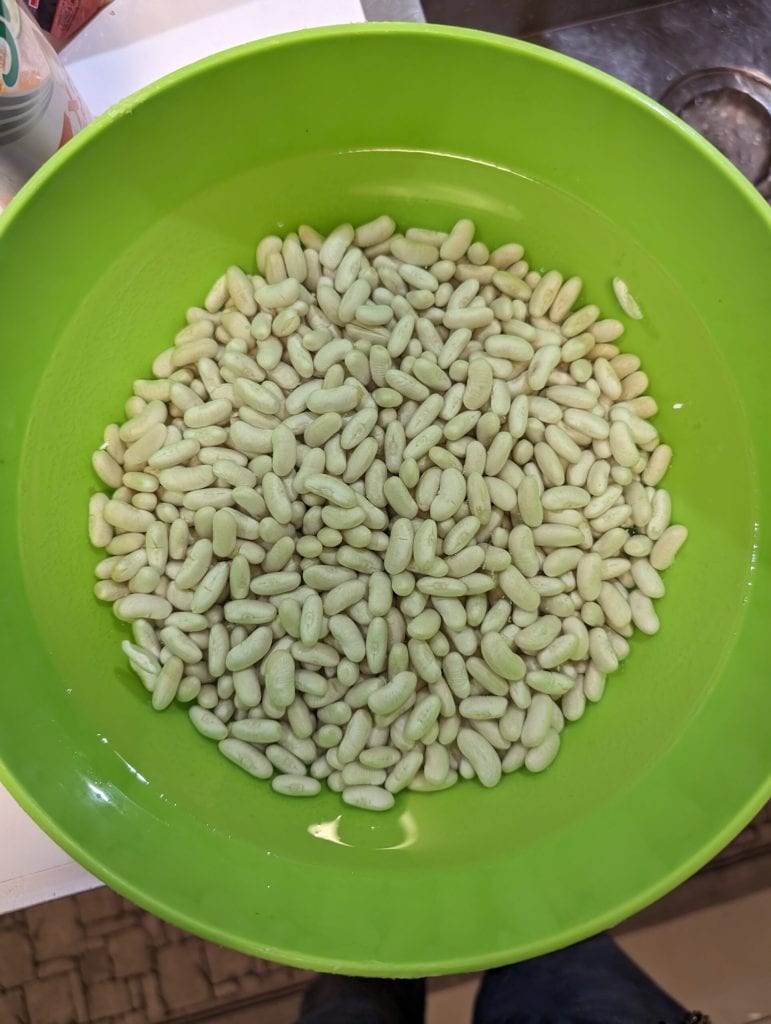
After soaking for at least 12 hours, remove the dried beans from the soaking water and rinse them thoroughly. Then, place them in a clay pot (if possible) with garlic, bay leaves, and celery to maintain their natural flavor. Once cooked, the beans can be used in various ways in the kitchen, as they are a versatile ingredient.

Now bring the water to a boil. You will notice that the beans begin to release a white foam called saponin foam. Remove it with a skimmer or wooden spoon as it forms, as it consists of impurities like saponins, which are antinutritional substances and can interfere with nutrient absorption. Additionally, the foam can mask the natural flavor of the beans and make them indigestible, causing bloating and flatulence.
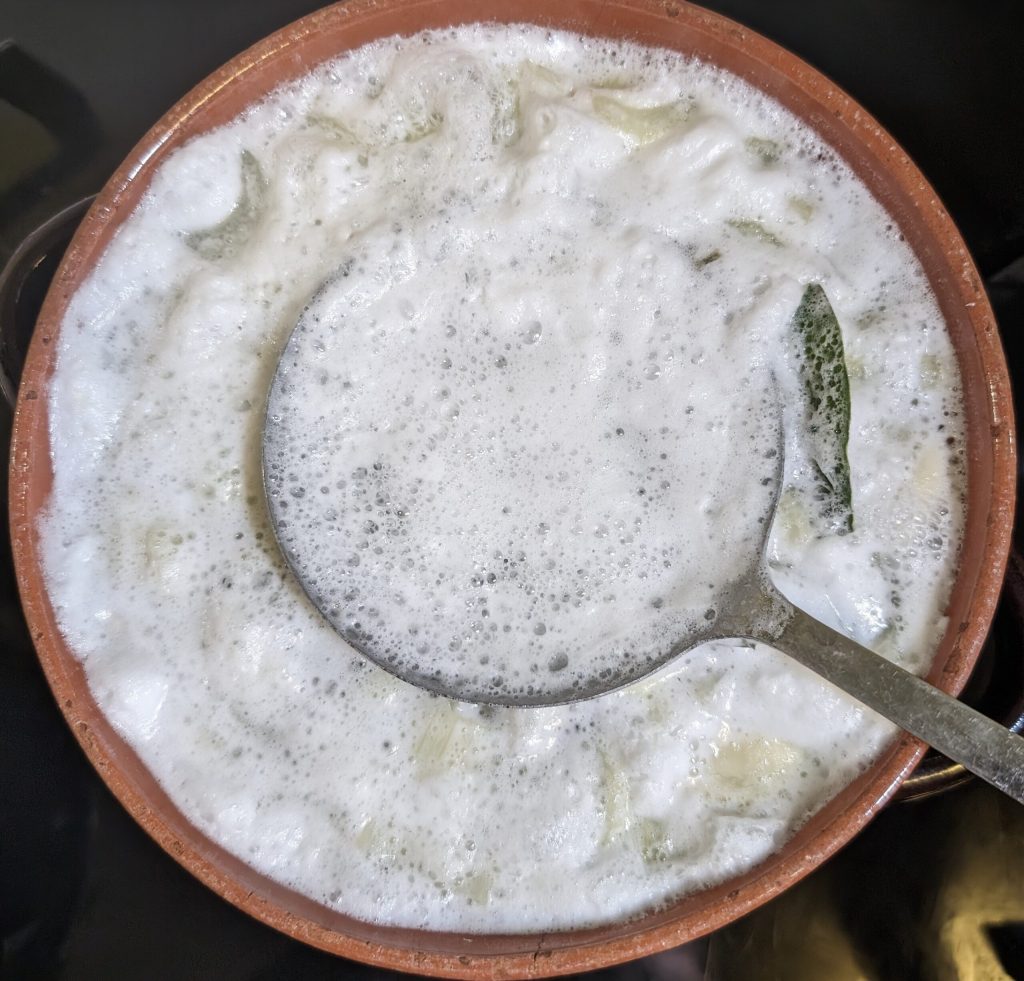
Cook the beans on low heat for 90 minutes, or until they are al dente. Do not discard the cooking water: it is rich in nutrients and flavor and has a natural thickening power that you can use in many ways. For example, to season soups, broths, risotto, pasta, and main dishes. Prepare a bean cream or bind the ingredients of meatballs, veggie burgers, and other vegetarian dishes. Great for making bread.
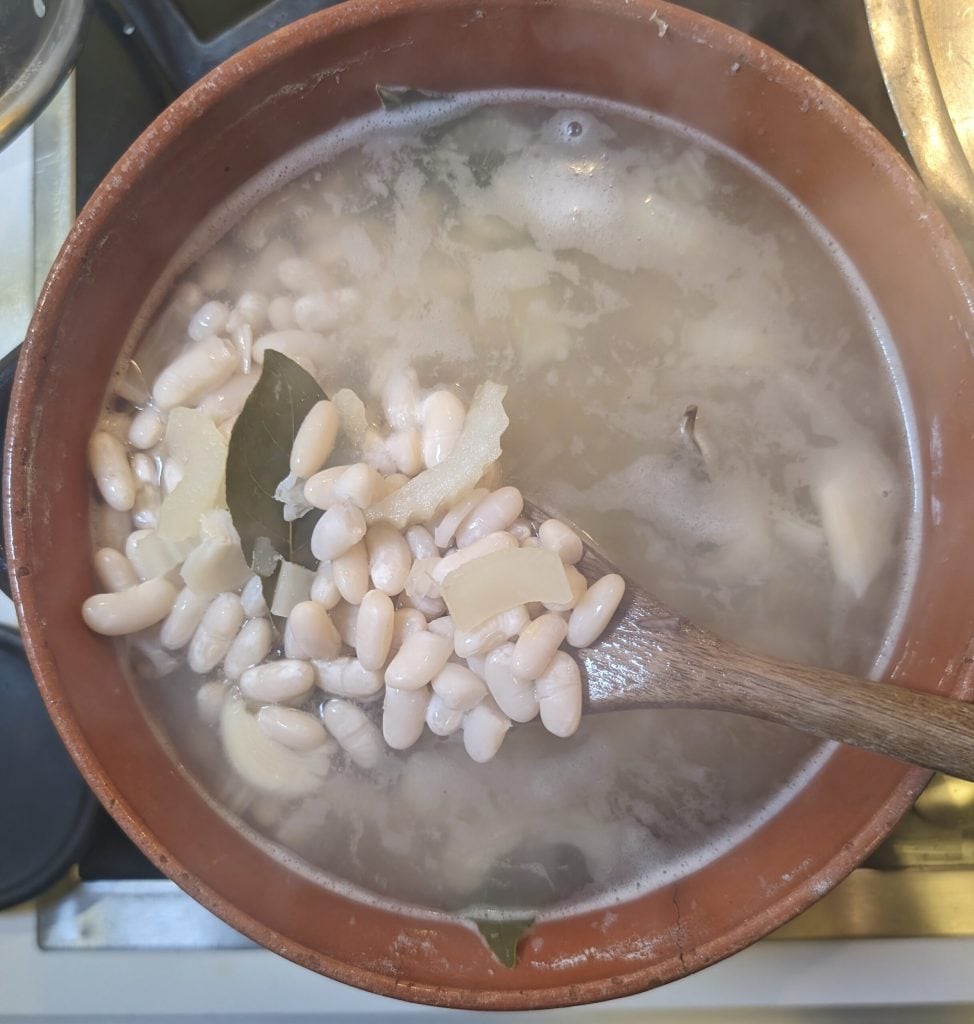
Only at the end, when the beans are already cooked, adjust the salt to your taste. Before turning off the stove, add the extra virgin olive oil raw if you prefer to serve the beans immediately, warm or at room temperature. If you prefer to enjoy them cold, let the beans cool in their cooking broth. This way, they will absorb more flavor and be even more delicious.
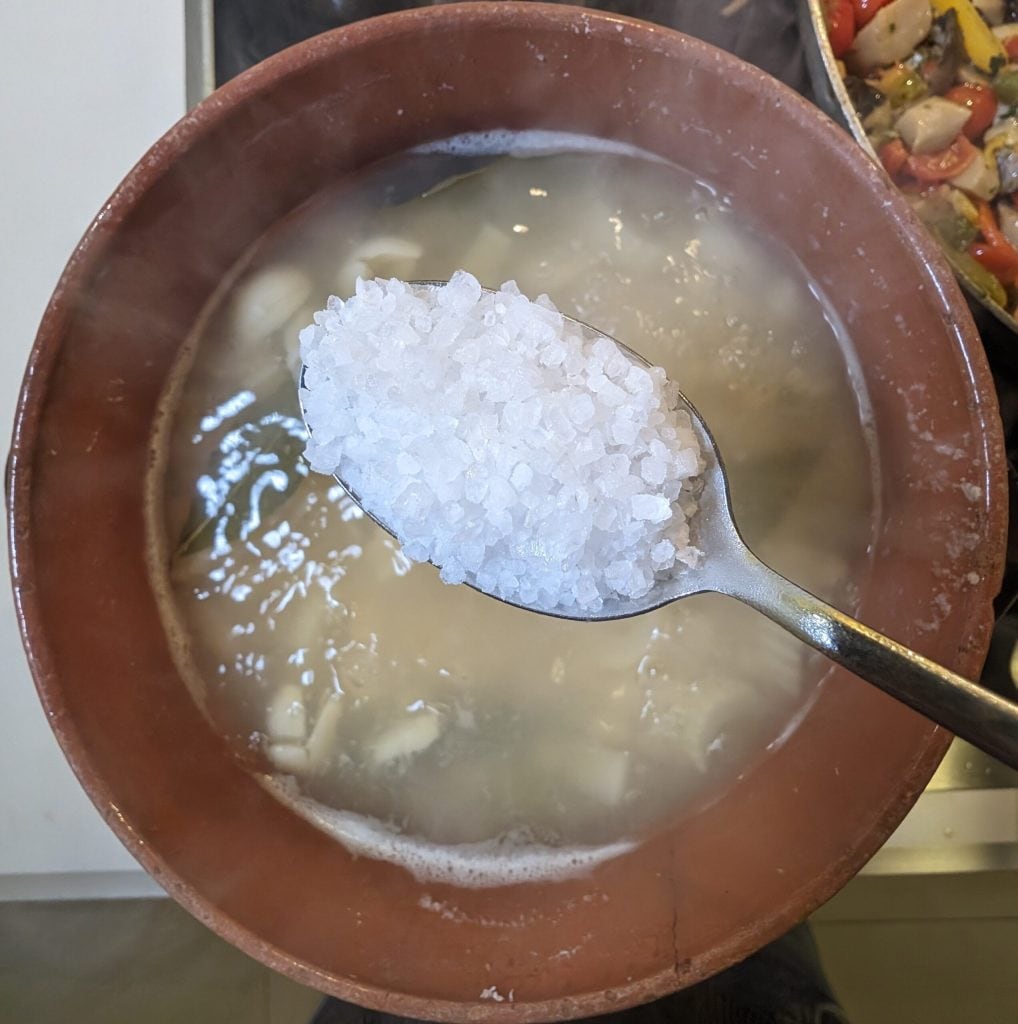
Let the beans cool to room temperature and taste them naturally: accompany them with fresh bread croutons for a simple and tasty first course. You will be amazed by their genuine flavor. Trust me, you will definitely want seconds! With leftover beans, you can prepare: First courses like pasta and beans, soups, stews. Main courses such as bean meatballs, veggie burgers, bean salads. Natural beans are an excellent base for creating many creative and tasty dishes. Bon appétit from DadCook!
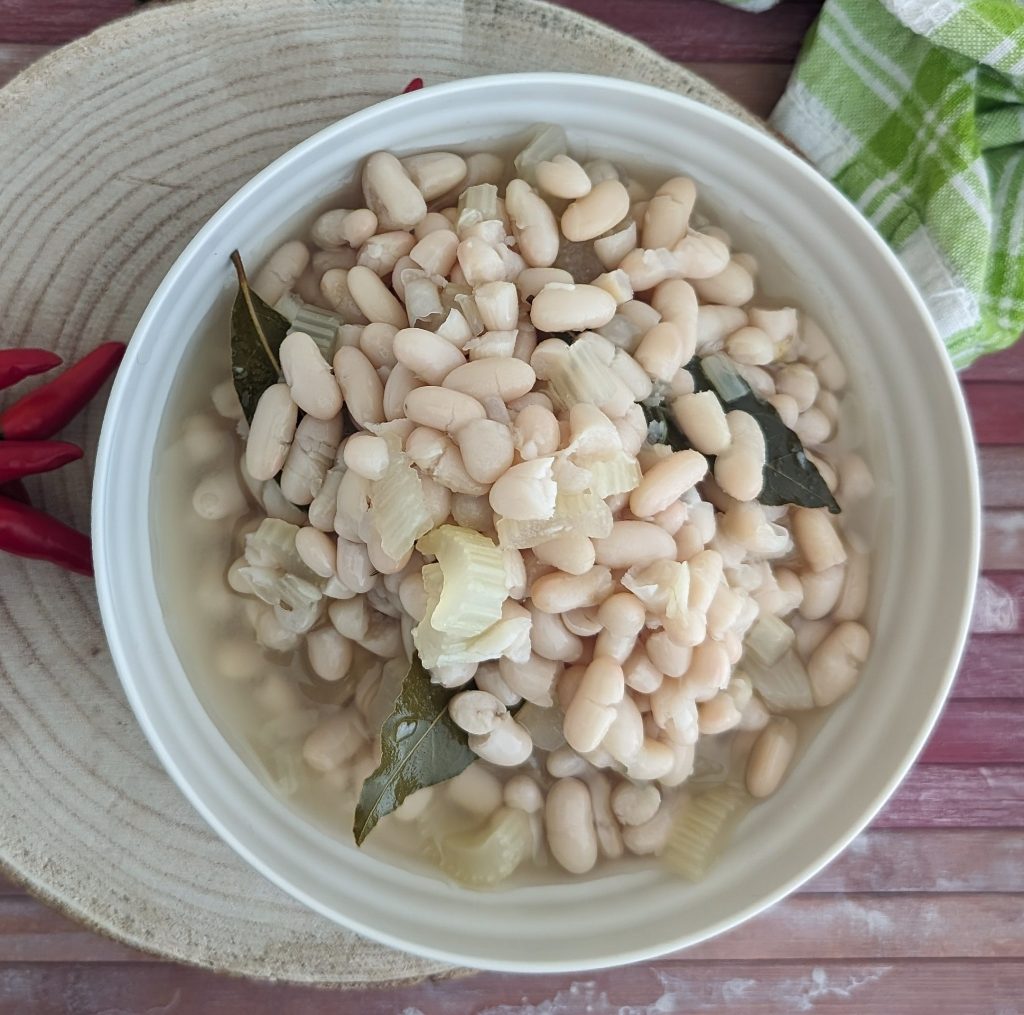
How to store leftover beans?
There are several ways to store leftover beans:
In the fridge: Put the beans in an airtight container and add a bit of cooking water or vegetable broth and consume the beans within 3-4 days.
In the freezer: Put the beans in a freezer bag and label the bag with the freezing date. Freeze the beans for up to 3 months. Before using frozen beans, thaw them at room temperature or in the refrigerator and heat them in a pot with a bit of water or vegetable broth.
In the freezer: Put the beans in a freezer bag and label the bag with the freezing date. Freeze the beans for up to 3 months. Before using frozen beans, thaw them at room temperature or in the refrigerator and heat them in a pot with a bit of water or vegetable broth.
Some tips:
Do not add salt to the beans before storing them. If you want to store the beans for a longer period, you can sterilize them.
Stored beans can be used to prepare first courses, main courses, salads, and many other dishes.
Here are some recipes with leftover beans: Pasta and beans, Bean soup, Vegetable and bean soup. Bean meatballs, Veggie bean burgers, Bean salad.
Bon appétit!
What wine can I pair with boiled beans?
In general, boiled beans pair well with light and fresh white wines with good acidity. Here are some examples: Vermentino: a Ligurian white wine with notes of citrus and white flowers. Trebbiano d’Abruzzo: an Abruzzese white wine with notes of fresh fruit and almonds. Bianco di Custoza: a Venetian white wine with notes of white peach and green apple. Sauvignon Blanc: an international white wine with notes of herbs and citrus.
If the beans were prepared with tomato or bacon, you can pair a light and fruity red wine. Here are some examples: Bardolino: a Venetian red wine with notes of cherries and strawberries. Valpolicella Classico: a Venetian red wine with notes of cherries and spices. Chianti Classico: a Tuscan red wine with notes of cherries, plums, and spices. If the beans were prepared with vegetables, you can pair an aromatic white or red wine. Here are some examples: Gewürztraminer: an aromatic white wine with notes of roses and lychee. Riesling: an aromatic white wine with notes of white flowers and yellow fruit. Pinot Noir: an aromatic red wine with notes of red fruits and spices.
Finally, if the beans were prepared in a soup or stew, you can pair a full-bodied white or red wine. Here are some examples: Chardonnay: a full-bodied white wine with notes of butter and vanilla. Pinot Grigio: a full-bodied white wine with notes of apples and pears. Merlot: a full-bodied red wine with notes of plums, chocolate, and spices. Beyond these examples, the choice of wine is a matter of personal taste. I suggest trying different combinations to find the one you like best. Bon appétit!
Finally, if the beans were prepared in a soup or stew, you can pair a full-bodied white or red wine. Here are some examples: Chardonnay: a full-bodied white wine with notes of butter and vanilla. Pinot Grigio: a full-bodied white wine with notes of apples and pears. Merlot: a full-bodied red wine with notes of plums, chocolate, and spices. Beyond these examples, the choice of wine is a matter of personal taste. I suggest trying different combinations to find the one you like best. Bon appétit!

